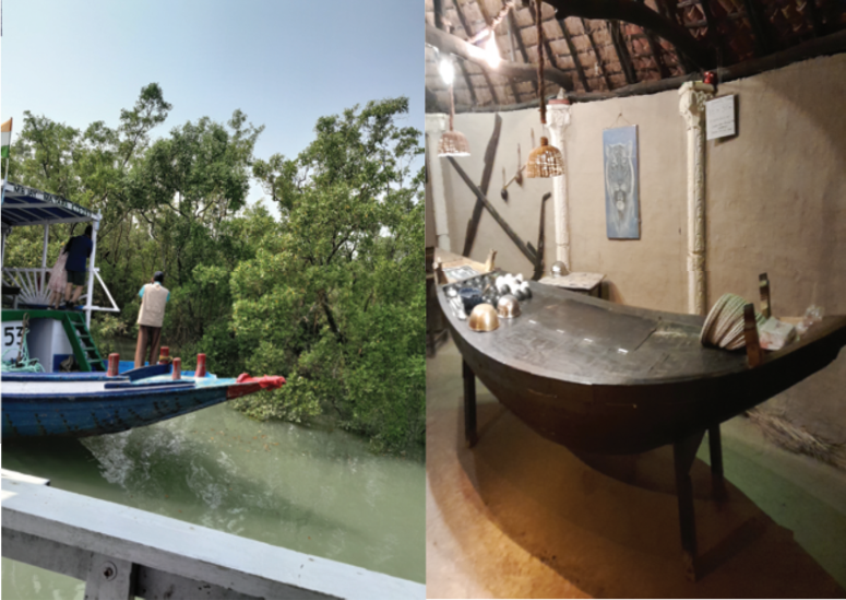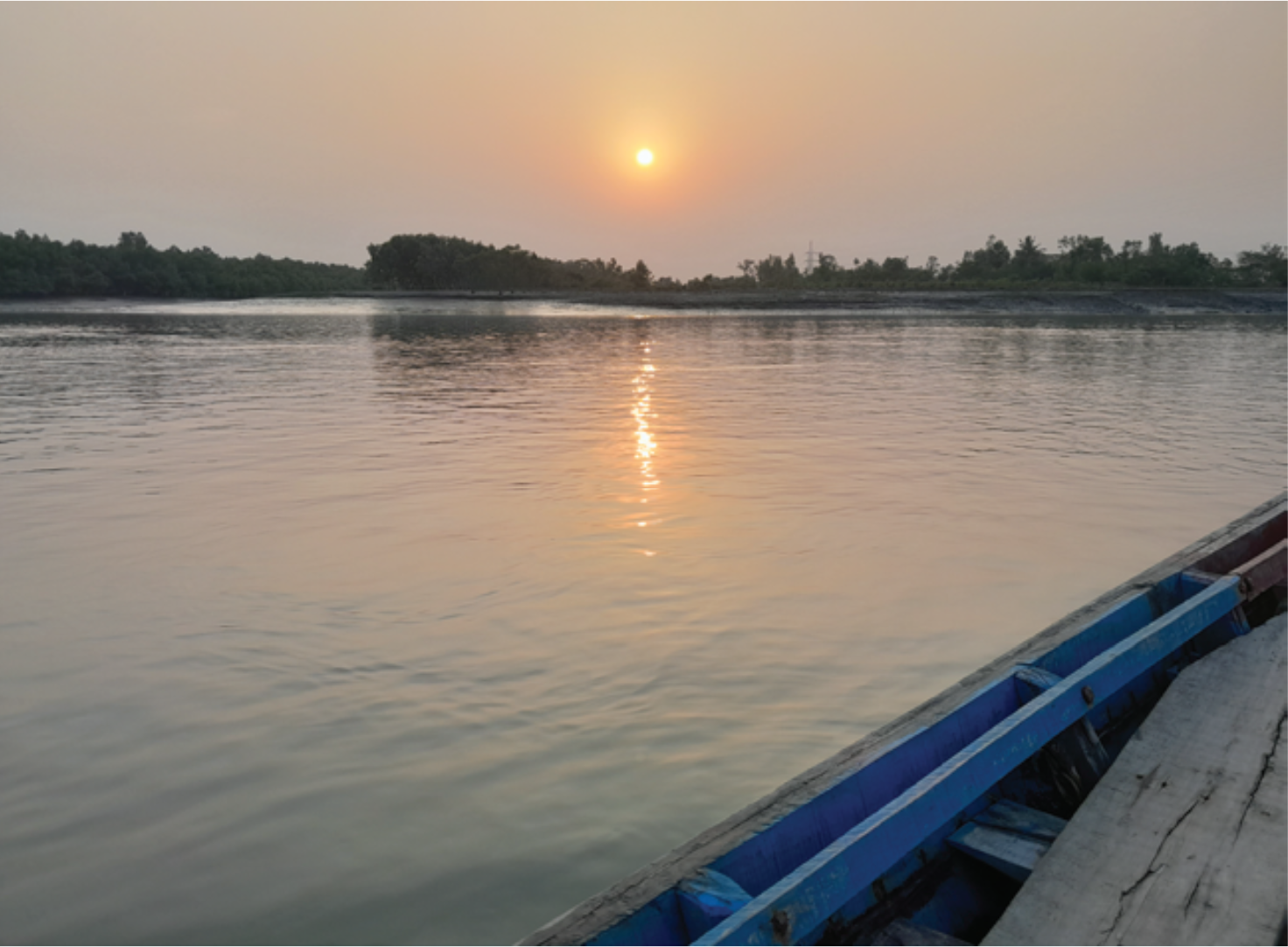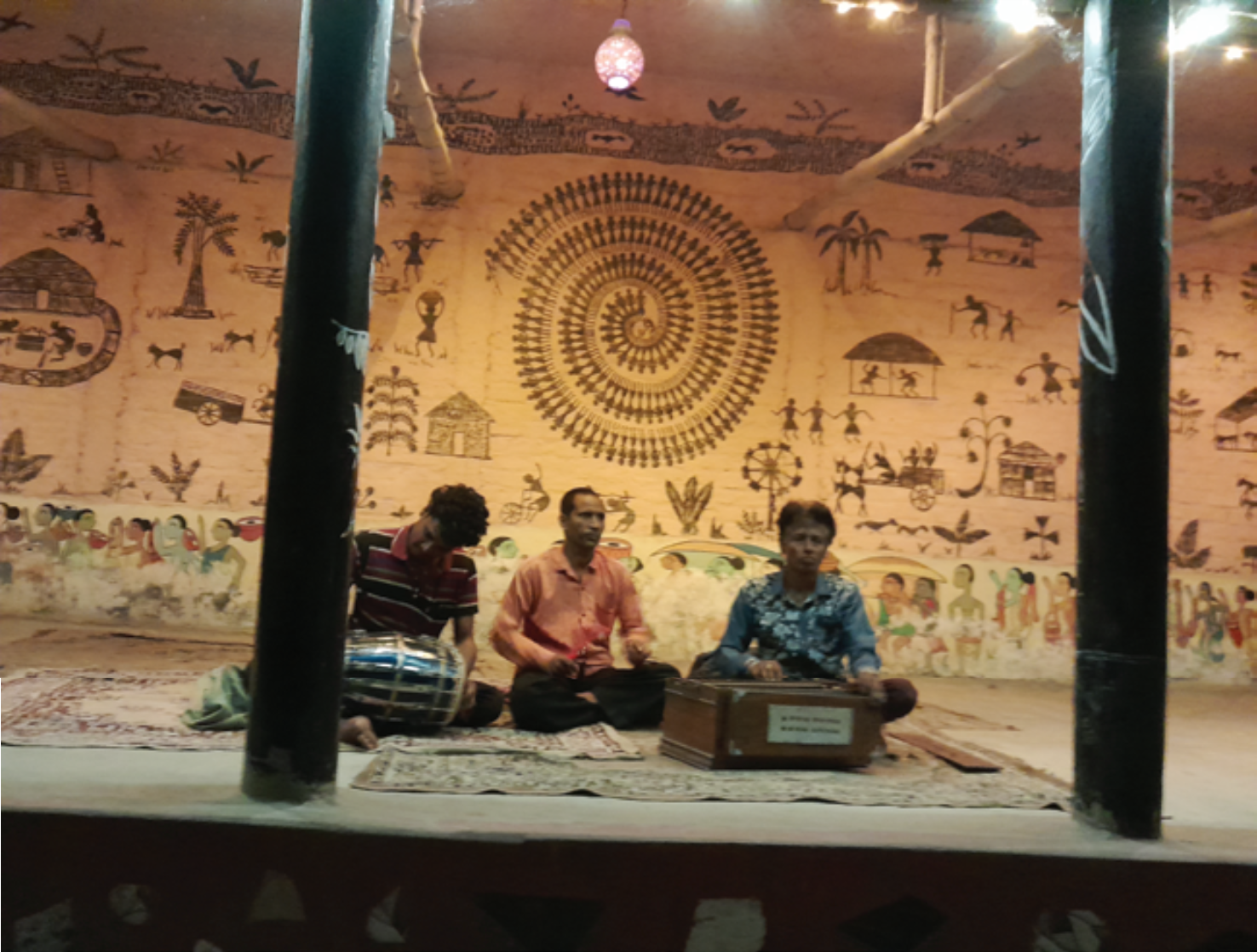The Sunderbans, a mystical labyrinth where land and water merge in a breathtaking dance, captivates the senses with its ethereal beauty. Verdant mangrove forests stand tall, their roots intertwining like a web of life, offering sanctuary to a rich tapestry of flora and fauna found nowhere else on Earth. Amidst this serene landscape, elusive Royal Bengal Tigers roam freely, while graceful estuarine crocodiles glide through the water with silent elegance. Manjira Majumdar paints an attractive picture of the Sunderbans, a testament to the sublime beauty of the natural world.

You may not spot the elusive Royal Bengal Tiger in the forests of Sunderbans, but the bright sun, swirling rivers and a sudden sight of baby crocodiles basking in the sun, can totally rejuvenate you.
The tiger, for most of the time, remains elusive. The stories about tigers, however, abound. The stories of tiger widows, the love-hate between the villagers and the deadly man-eater prevail. The fear of the honey collectors who foray into the forest and the fishermen is palpable but humans and animals have to survive. Talks of adequate compensation etc., are the folklores of the region, where Bon Bibi, the goddess of the forest is invoked daily by villagers, cutting across faith.
There is so much more to this delta region which is at the confluence of three major rivers of Ganga, Brahmaputra and Meghna. A huge chunk of the Sunderban crosses to the Bangladesh side.
To visit Sunderbans is to inhale oxygen and to connect with nature in its pristine glory. The dense mangrove forests are on one side while the habitable islands are on the other with various rivers separating the two segments. It is all about being surrounded by water on all sides and the all-pervasive scenic greenery. Amid all this you may spot a wildlife or two and different kinds of birds.
I recently visited one of the 54 deltaic islands of the total 104 habitable islands on the West Bengal side, when the weather was balmy in March.
It is almost late afternoon when I arrive after two ferry rides, one to Godhkali and then onward to Satjelia where the eco resort is located. After a hurried lunch there is still time for a short cruise on the River Bidya. As the boatman breaks into a song about how the mon pakhi, the bird aflutter in his heart is waiting to be freed, the last rays of the evening sun look to nestle on the simmering waters. Watching the sun set over the horizon and creating little golden pools on the river, will remain one of the most beautiful sights forever etched in my mind.
Early next morning we are on the boat again. The only thing a tourist can do in Sunderban is to stay afloat for most of the time; zigzagging on the waters you encounter other tourists on the different launches and steamers coasting along the forest banks. This dense forest curtained by the sundari trees, from which the forest gets its name, is the habitat of the tigers and one is strictly advised against venturing into it.

Sometimes the boat pulls up along an island in which there is a natural animal reserve with a watch tower, from where you can gaze into the forests and spot deer, wild boar etc. Wildlife enthusiast on photographic missions usually set up all-night vigils to capture images of the tiger. If they are lucky, their patience is rewarded. If you are interested in birding, keep your binoculars ready to spot varieties of kingfisher, the crested serpent eagle, or even the spotted dove, among other birds.
Sometimes, the steamer pulls up along another boat selling something. It could be the fresh catch of the day or seafood like crabs and jumbo prawns. While our boat has been well-stocked with provisions such as vegetables, oil, cooking fuel, the fresh fish is loaded from another.
The rivers Bidya, Vidyadhari, Matla at one point meet before they merge with the Bay of Bengal; only the locals can identify the different rivers. The tides here come and go.
The lodges are positioned as ecological properties, built with eco-friendly materials. Luckily no chrome and glass have yet made their way in here so you do get a slice of being literally in the wild unless you wish to spend the night on a launch, with bunkers below.
From our upper deck, we spot baby crocodiles basking in the sun, ready to slither into the waters at a whim. The fresh breeze, the soothing waters all around work their magic and it is indeed a therapeutic experience. Our guide teases the lady cook on the boat to ask, “So sundari (pretty) of Sunderban, what have cooked for us?”

Her name is Manasi and she has been busy below the boat in a tiny kitchen space, rustling some simple yet tasty village fare. There is quite a spread of rice, dal, bhaji, a couple of freshly cooked vegetables, fish curry, shrimps with vegetables and chutney. Most of the supplies, except fish, comes from the mainland, the nearest being Gosaba. The soil is poor and the river water is highly saline.

Gosaba is from where one has to take a ferry to whichever island you plan to stay or resort you have booked into. Sometimes, it entails two ferry rides. The trip can include walks into the nearby villages to observe simple rural life where some attempts to grow paddy and a few vegetables/fruits for local use are successful with the sweet waters of the inland ponds and canals.

Once you return at the resort, tired after a long day on the boat and in the sun, you can relax to the sound of the crickets’ incessant chorus. If very adventurous, you can make another trip when it is dark, yes on the boat, to catch some luminous creatures under the waters. Though there is electricity, the entire region seems cut off from the rest of the world as the peaceful night settles in and you are ready to return re-energized to the hustle and bustle of the city life the next morning.

If you are visiting Kolkata, two nights away at Sunderban is great. Do avoid the rainy months. Ideally, the months between September and March are the best. To get there, you can customize your trip by being picked up from your destination and dropped. Once you reach Gosaba in Canning, there are ferry rides to whichever island you have chosen to stay. There are also cruises which sail from Kolkata on the Hooghly and coast along the Sunderbans to make a round trip.


 Manjira Majumdar studied Comparative Literature and is presently an independent journalist and author. Her areas of focus are people, places, livelihoods, crafts, films and society. Surrounded by books, house plants, cats, she hopes to bring all her experiences together to write more books, both fiction and non-fiction. She lives in Kolkata, when not traveling.
Manjira Majumdar studied Comparative Literature and is presently an independent journalist and author. Her areas of focus are people, places, livelihoods, crafts, films and society. Surrounded by books, house plants, cats, she hopes to bring all her experiences together to write more books, both fiction and non-fiction. She lives in Kolkata, when not traveling.